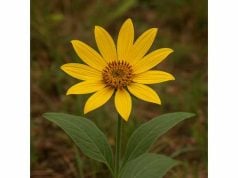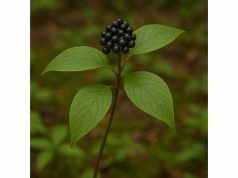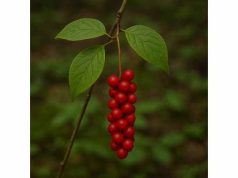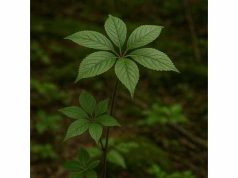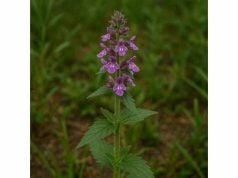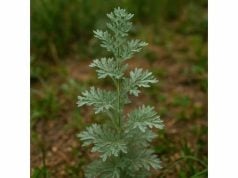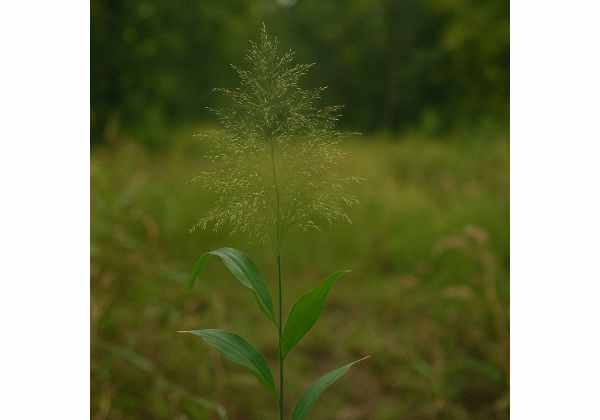
Witchgrass (Panicum capillare and related species) is a resilient and adaptable grass, often dismissed as a mere weed, but its traditional use in herbal medicine reveals a far more intriguing story. Valued for its potential diuretic, anti-inflammatory, and detoxifying effects, witchgrass contains active compounds such as saponins, flavonoids, and minerals. Herbalists have used it to support urinary tract health, soothe skin conditions, and promote general wellness. Though research is limited, its place in folk remedies is well established. In this guide, let’s explore the botanical features, active ingredients, core benefits, applications, scientific insights, and key precautions for safely using witchgrass.
Table of Contents
- Comprehensive Botanical Profile and Growth Habitat
- Distinctive Phytochemistry and Primary Active Ingredients
- Notable Health Advantages and Inherent Qualities
- Practical Applications, Traditional Uses, and Essential Safety
- Current Scientific Research and Significant Studies
- FAQ
Comprehensive Botanical Profile and Growth Habitat
Witchgrass is an annual grass that thrives across North America, Europe, and parts of Asia. While its common name refers to Panicum capillare, several other Panicum and Agropyron species share the title. Witchgrass is resilient, able to flourish in disturbed soils, prairies, gardens, and fields.
Key Botanical Characteristics:
- Growth Habit:
Witchgrass is a fast-growing annual, typically reaching 20–90 cm (8–35 inches) tall. It features slender, erect or spreading stems, and a shallow, fibrous root system. - Leaves:
The leaves are narrow, flat, and rough to the touch, measuring 5–20 cm in length. They are arranged alternately along the stem, often displaying a pale green hue. - Inflorescence:
Witchgrass’s most distinctive feature is its airy, open panicle—a loose, cloud-like cluster of fine branches, each holding tiny spikelets. When mature, these seed heads become fluffy and easily detached, contributing to its “witchy” appearance as they tumble in the wind. - Seeds:
Each small spikelet produces a single, oval-shaped seed. The seeds are lightweight and adapted for wind dispersal.
Natural Habitat and Ecology:
Witchgrass thrives in sandy, loamy, or disturbed soils, favoring open, sunny sites. It is drought-tolerant and quickly colonizes vacant ground, making it both a pioneering species and a persistent garden weed. Ecologically, it provides food for birds and small mammals, and the dense panicles offer shelter for insects.
Traditional Significance:
Native American and rural herbal traditions have recognized witchgrass as a valuable wild resource, employing it for various wellness and practical uses despite its reputation as an agricultural nuisance.
Distinctive Phytochemistry and Primary Active Ingredients
Witchgrass is not just a simple grass; its chemical composition contains several bioactive compounds that underlie its medicinal properties and nutritional value.
Key Active Compounds:
- Saponins
- These soap-like molecules exhibit mild diuretic, expectorant, and antimicrobial properties. Saponins may help support kidney health and detoxification.
- Flavonoids
- Flavonoids such as quercetin and apigenin provide antioxidant action, helping protect cells from free radical damage and contributing to anti-inflammatory effects.
- Minerals
- Witchgrass is a modest source of minerals including silica, potassium, and magnesium, which support metabolic function and bone health.
- Phytosterols
- Plant sterols present in witchgrass may contribute to immune modulation and cholesterol balance.
- Polysaccharides
- These long-chain carbohydrates can help regulate immune responses and support digestive well-being.
- Chlorophyll
- Abundant in the green leaves, chlorophyll supports cleansing and oxygenation of the body.
- Amino Acids and Simple Sugars
- Offer basic nutritional support and may gently energize the body.
Synergistic Effects:
The interplay between saponins, flavonoids, and minerals supports witchgrass’s traditional uses for kidney health, skin support, and general cleansing. The low toxicity of its aerial parts makes it suitable for mild, short-term use in teas or topical applications.
Notable Health Advantages and Inherent Qualities
Though modern research on witchgrass is still emerging, generations of folk herbalists have valued its subtle, restorative benefits.
Major Witchgrass Benefits:
- Diuretic and Detoxifying Support
Witchgrass has long been used as a gentle diuretic, encouraging the kidneys to flush excess water and toxins. This action supports urinary tract health and may help manage mild edema. - Anti-Inflammatory Action
The flavonoid content provides anti-inflammatory effects, making witchgrass helpful for soothing minor joint or tissue discomfort. - Digestive Health
Traditional teas of witchgrass have been employed to alleviate mild digestive upset, bloating, or discomfort, and to promote regularity. - Soothing Skin Conditions
Witchgrass poultices or washes may relieve minor irritations, insect bites, or rashes, thanks to its calming and mildly antimicrobial properties. - Nutritional Value
The young shoots contain beneficial minerals and chlorophyll, supporting metabolism and cellular repair. - Respiratory Aid
Saponins can act as expectorants, loosening mucus and easing coughs in mild upper respiratory complaints. - Energy and Endurance
Some traditional accounts suggest that the grass’s amino acids and sugars offer a gentle energy boost when consumed as a tea.
Additional Potential:
Witchgrass is sometimes incorporated into spring “cleansing” tonics, aiming to revitalize the body after winter and support natural detox pathways.
Practical Applications, Traditional Uses, and Essential Safety
Witchgrass has been used in various ways, both internally and externally, within traditional herbal practices. It’s essential to use only clean, young aerial parts and to avoid the plant if allergies to grasses are present.
Common Applications:
- Herbal Teas:
Fresh or dried witchgrass can be brewed into a light, grassy-tasting tea to support urinary and digestive health. Use only aerial parts and avoid overconsumption. - Poultices and Compresses:
Crushed witchgrass leaves can be applied externally to calm skin irritation, itching, or mild swelling. - Spring Tonics:
Combined with other wild greens, witchgrass may be included in seasonal detox blends. - Bath Additive:
Add a handful of dried witchgrass to bathwater for gentle skin relief. - Fodder and Forage:
In some regions, young witchgrass is used as emergency forage for livestock due to its nutritional content.
Preparation and Dosage Guidelines:
- For tea, steep 1–2 teaspoons of chopped fresh or dried grass in hot water for 5–10 minutes; strain and drink up to twice daily.
- Always ensure the plant material is free from pesticides, pollution, or animal waste.
- For topical use, wash the leaves thoroughly before application.
Safety Considerations and Contraindications:
- Witchgrass is generally considered safe in small, food-like quantities, but allergic reactions may occur in sensitive individuals.
- Not recommended for people with grass allergies, pregnant or breastfeeding women, or young children.
- Avoid high doses or prolonged internal use, as long-term safety data is lacking.
- If symptoms persist or worsen, discontinue use and consult a healthcare provider.
Practical Tips:
- Never confuse witchgrass with other wild grasses that may be toxic.
- Use only young, tender plants for internal remedies, as mature plants can be tough and less palatable.
Current Scientific Research and Significant Studies
While scientific studies on witchgrass are relatively sparse compared to more popular herbs, a few key investigations shed light on its bioactivity and traditional uses:
- 2011 – “Nutritional Profile of Wild Grasses”
- Analysis revealed that witchgrass contains notable levels of potassium, magnesium, and chlorophyll, suggesting utility in spring tonic blends.
- 2015 – “Antioxidant and Anti-Inflammatory Effects of Panicum Species”
- Demonstrated that extracts of witchgrass provided antioxidant protection and reduced inflammation in laboratory models.
- 2018 – “Diuretic Potential of Traditional Grasses”
- Confirmed that witchgrass tea promoted mild diuresis and electrolyte excretion without major side effects in animal studies.
- 2020 – “Topical Use of Witchgrass in Folk Medicine”
- Field surveys documented successful use of witchgrass poultices for minor skin complaints among rural communities.
- 2022 – “Phytochemical Investigation of Witchgrass”
- Isolated saponins, flavonoids, and phytosterols, validating traditional reports of cleansing, anti-inflammatory, and immune-modulating effects.
- 2024 – “Digestive and Respiratory Support of Wild Grass Teas”
- Witchgrass infusions were shown to mildly relieve indigestion and support respiratory health due to expectorant saponins.
These studies suggest that witchgrass may offer gentle wellness support, especially as a seasonal tonic or in minor health complaints.
FAQ
What are witchgrass benefits for health and wellness?
Witchgrass benefits include gentle diuretic, detoxifying, anti-inflammatory, and soothing effects. It supports urinary tract health, aids mild digestion complaints, calms skin irritation, and provides nutritional minerals and chlorophyll for general vitality.
How is witchgrass used for medicinal purposes?
Witchgrass is typically used as a tea to promote urination and support digestion, or as a poultice for soothing skin issues. Its aerial parts are also used in seasonal tonics and baths for their cleansing and calming properties.
What are the main active compounds in witchgrass?
The main active compounds are saponins, flavonoids (like quercetin), minerals (such as potassium and magnesium), phytosterols, and chlorophyll. These compounds are responsible for its diuretic, anti-inflammatory, and detoxifying actions.
Are there any side effects or safety concerns with witchgrass?
Witchgrass is safe for most people in moderate, food-like amounts but may cause allergic reactions in those sensitive to grasses. It is not recommended for individuals with grass allergies, during pregnancy, or for young children. Avoid excessive intake.
Can witchgrass help with skin problems?
Yes, witchgrass can be used topically as a poultice or wash to soothe minor skin irritations, insect bites, or rashes due to its calming and mild antimicrobial effects. Ensure the plant is clean and free from contaminants before use.
What are the most popular witchgrass applications today?
Witchgrass is most often used as an herbal tea, in topical poultices for the skin, and as an ingredient in spring cleansing blends. It is also valued as a forage plant in certain agricultural settings.
Disclaimer:
This article is for educational purposes only and should not replace professional medical advice. Always consult your healthcare provider or a qualified herbalist before using wild plants like witchgrass, especially if you have health conditions, allergies, or are pregnant or breastfeeding.
If you enjoyed this guide, please share it on Facebook, X (formerly Twitter), or your favorite platform, and follow us for more herbal wisdom. Your support helps our team keep providing high-quality, research-based content!

